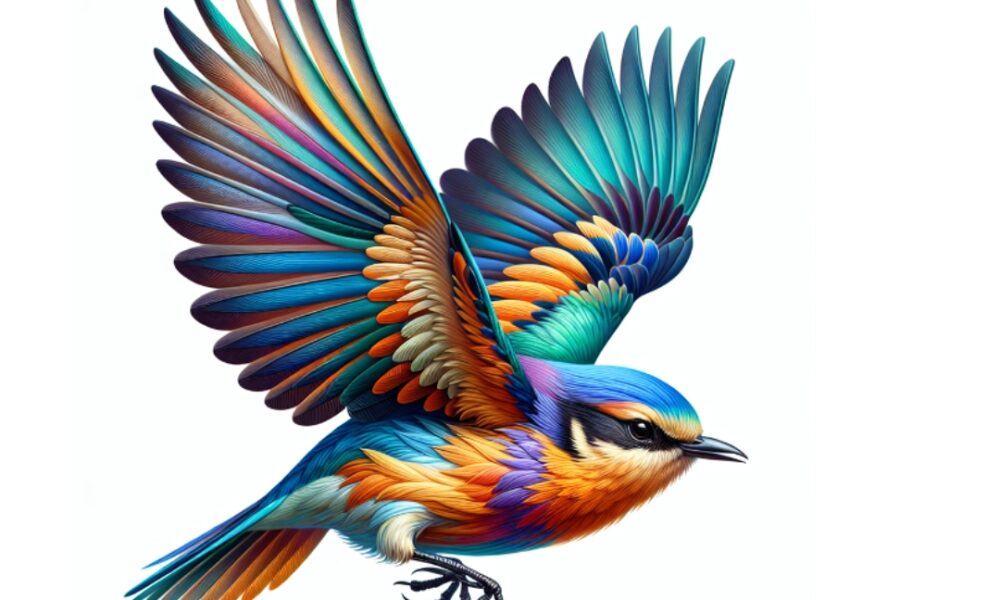Nikon Coolpix P1000: Best Camera for Bird Photography

Introduction
Bird photography is a fascinating genre in wildlife photography. Photographers from all over the world are drawn to the challenge of capturing the intricate details and vibrant colors of birds in their natural habitats. But to get those amazing shots, you need more than just patience and skill – you also need the right camera.
Using a camera that’s specifically designed for bird photography is crucial. It allows you to capture those split-second moments with precision and clarity. Such a camera should be able to handle fast movements, have a powerful zoom, and deliver excellent image quality in different lighting conditions.
In this article, we’ll take an in-depth look at why the Nikon Coolpix P1000 camera is widely regarded as the best camera for bird photography. We’ll explore its main features, performance stats, and how well it works for photographing birds. You’ll also find some recommended settings specifically for bird photography, along with a comparison to other cameras in the same category.
Understanding Bird Photography and Its Unique Challenges
Bird photography is different from other types of wildlife photography because birds have their own special behaviors and characteristics. They move quickly and in unpredictable ways, which can make it challenging to take clear and well-composed photos of them. This is where having the right equipment becomes crucial; you’ll need a camera with a strong zoom lens, fast autofocus, and reliable image stabilization.Muha meds disposable
Technical Challenges in Bird Photography
Photographers face several technical challenges when shooting birds:
- Achieving Sharp Focus: Birds are often small and move quickly. Keeping them in focus requires an advanced autofocus system that can quickly and accurately track the subject.
- Capturing Fleeting Moments: Birds’ actions, such as taking off
- or catching prey, happen very quickly. To capture these moments without any blurring, you’ll need to use high shutter speeds.
- Dealing with Variable Lighting: Birds can be found in all kinds of environments, from wide open skies to dense forests. Being able to adapt to different lighting conditions is important, so having a camera with good ISO performance and metering modes is helpful.
- Maintaining Detail at Long Distances: Sometimes you’ll have to photograph birds from far away. In these situations, having a powerful zoom lens will allow you to get close-up shots while still preserving the fine details of their feathers.
The Artistic Side of Bird Photography
In addition to the technical aspects, bird photography also requires patience and an understanding of bird behavior. By observing their habits and movements, you can better anticipate when and where to capture the most interesting shots.
Key Considerations for Choosing a Camera for Bird Photography
The right camera specifications, features, and settings make a significant difference in capturing high-quality bird images. When selecting a camera for bird photography, consider the following factors:
Camera Specifications
- Zoom Range: A powerful zoom range is crucial. Look for cameras with at least 600mm focal length capability.
- Sensor Size: Larger sensors generally provide better image quality, especially in low light conditions.
- Resolution: Higher resolution sensors allow for detailed images and cropping flexibility.
Camera Features
- Autofocus System: Fast and accurate autofocus is essential for capturing sharp images of moving birds. Look for cameras with advanced AF systems.
- Image Stabilization: Helps to reduce blur caused by camera shake, particularly important when using long zoom lenses.
- Burst Mode: High frames-per-second (FPS) rates enable capturing multiple shots in quick succession, increasing the chance of nailing the perfect moment.
Camera Settings for Bird Photography
- Aperture: Wide apertures (e.g., f/2.8) allow more light and create a shallow depth of field to isolate subjects.
- Shutter Speed: Fast shutter speeds (e.g., 1/1000s or faster) freeze motion and prevent blur from bird movements.
- ISO Sensitivity: Adjustable ISO settings help manage exposure in various lighting conditions; lower ISOs are preferable to minimize noise.
By focusing on these key considerations, you can significantly improve your chances of capturing stunning bird photographs.
The Versatile Nikon Coolpix P1000 for Bird Photography Enthusiasts
The Nikon Coolpix P1000 has gained popularity among bird photography enthusiasts because it offers advanced features while being easy to use. This bridge camera stands out for its impressive 125x optical zoom lens, which is equivalent to a 24-3000mm range in 35mm terms. With such a wide zoom range, you can capture detailed shots of birds even from a significant distance.
Key Features:
- Zoom Range: The extensive zoom capability allows you to photograph birds from a considerable distance without disturbing their natural behavior.
- User-Friendly Design: Its ergonomic build and intuitive controls make it accessible for both beginners and seasoned photographers.
- Image Quality: Equipped with a 16.7MP sensor, the camera ensures detailed images even at high zoom levels.
- 4K Video Capability: Capture stunning video footage of birds in motion, with the added benefit of recording in ultra-high definition.
- Image Stabilization: Helps maintain sharpness and clarity in your shots, reducing the blur caused by camera shake at long focal lengths.
Bird photographers often encounter challenges such as changing lighting conditions and fast movements. The Nikon Coolpix P1000 addresses these issues with its advanced autofocus system and various metering modes, providing flexibility and precision in capturing those fleeting moments.
Another advantage of this camera is its ability to shoot videos in 4K resolution, allowing you to capture not just still images but also stunning footage of birds in action.
The Nikon Coolpix P1000 also features image stabilization technology, which is especially useful when using the camera at its maximum zoom range. This feature helps reduce blurriness caused by hand movements, ensuring sharper images.
For those who prefer a hands-on approach, the adjustable touch screen of the Nikon Coolpix P1000 allows for easy navigation and flexible shooting angles.
Why It’s a Great Choice for Bird Photography
- Budget-friendly: Compared to high-end DSLR cameras with telephoto lenses, the Nikon Coolpix P1000 offers similar zoom capabilities at a fraction of the price.
- Portable: Its compact size and lightweight design make it convenient to carry around during outdoor photography sessions.
- Versatile: In addition to bird photography, this camera can also be used for other genres such as wildlife, landscape, and travel photography.
- User-friendly: With its intuitive interface and preset shooting modes, the Nikon Coolpix P1000 is suitable for photographers of all skill levels.
1. In-depth Look at the Key Specifications and Features
Impressive Zoom Range
One of the standout features of the Nikon Coolpix P1000 is its extraordinary zoom range. Equipped with a 125x optical zoom lens, it spans from 24mm to 3000mm (35mm equivalent). This extensive range allows you to capture close-up shots of distant birds with astonishing detail. Whether you’re photographing a perched hawk or a soaring eagle, the P1000’s zoom capabilities ensure you won’t miss a moment.
Advanced Autofocus System
The camera’s autofocus system is another critical component for bird photography. The AF-S/AF-C/Manual Autofocus modes provide flexibility depending on your shooting conditions and preferences. The autofocus performance is particularly reliable for stationary or slow-moving subjects, thanks to its precise focusing capabilities.
Image Stabilization Technology
Capturing sharp images at extreme focal lengths can be challenging, but the P1000 mitigates this issue with its advanced image stabilization technology. The Dual Detect Optical VR (Vibration Reduction) helps reduce camera shake, enabling you to achieve clear and steady shots even when hand-holding the camera at maximum zoom.
Additional Noteworthy Features
- 4K Video Capability: High-resolution video recording adds an extra layer of versatility.
- Adjustable Touch Screen: Facilitates high-angle and low-angle shots.
- ISO Sensitivity: Ranges from ISO 100 to 6400, accommodating various lighting conditions.
- Built-in Flash: Useful for fill light in shadowed areas or low-light scenarios.
The combination of these features makes the Nikon Coolpix P1000 a formidable tool for bird photography, capable of delivering both quality and convenience.
2. Using the Right Settings: Guide to Bird Photography with the Nikon Coolpix P1000
Recommended Camera Settings
To capture stunning bird photos with the Nikon Coolpix P1000, it’s important to optimize your camera settings. Here are some detailed recommendations:
Aperture
For sharp images, use a wide aperture (f/2.8 to f/5.6) when there’s enough light. This will create a shallow depth of field, blurring the background and making the birds stand out.
Shutter Speed
Birds move quickly, so it’s crucial to use a high shutter speed to freeze their motion. Aim for at least 1/1000s; increase to 1/2000s or higher for very active birds.
ISO Sensitivity
To maintain good image quality, keep the ISO as low as possible. Start with ISO 100-400 in well-lit conditions. If the lighting is poor, you can go up to ISO 800 but be careful of introducing noise into your photos.
Additional Tips
In addition to the basic camera settings mentioned above, here are some extra tips that can help you improve your bird photography with the Nikon Coolpix P1000:
Focus Mode and Area
- Use AF-C (Continuous Autofocus) for birds in motion.
- Use AF-S (Single Autofocus) for stationary subjects.
- Set Focus Area mode to Wide for easier tracking of moving birds.
Exposure Mode
- Manual (M) mode offers maximum control over exposure settings and is great for situations where you want precise control over how your photo looks.
- Shutter Priority (S) mode can be useful when you need to ensure a fast shutter speed and let the camera automatically adjust other exposure settings for you.
White Balance
- Auto White Balance generally does a good job of handling different lighting conditions.
- However, if you find that the colors in your photos are off, you can manually adjust the White Balance setting based on the specific lighting situation.
These settings and tips will help you make the most out of your Nikon Coolpix P1000 when photographing birds, allowing you to capture clear and vibrant images of these beautiful creatures.
3. Pros and Cons: A Real-world Review of the Nikon Coolpix P1000 for Bird Photography
Strengths
Versatile Zoom Range
The standout feature of the Nikon Coolpix P1000 is its 125x optical zoom lens, equivalent to a 24-3000mm focal length. This unparalleled zoom capability allows you to capture birds from an incredible distance, making it ideal for documenting elusive or skittish species.
User-Friendly Design
The camera’s ergonomic design and well-placed controls make it easy to handle during extended birding sessions. The adjustable touch screen adds convenience when framing shots at challenging angles.
4K Video Capability
For those interested in capturing video footage, the P1000 offers 4K ultra-HD video recording, providing high-quality videos of birds in motion. This feature is especially useful for documenting bird behaviors and interactions.
Accurate Focus
The camera’s autofocus system performs well in good lighting conditions, ensuring that your subjects are sharp and well-defined. The manual focus ring offers additional control, particularly useful in cluttered environments or low-light scenarios.
Limitations
Image Quality at High ISO
One significant drawback is the deterioration of image quality at higher ISO settings. Beyond ISO 800, noise becomes noticeable due to the small sensor size, which can compromise the clarity of your shots.
Performance at Maximum Zoom
While the long zoom range is impressive, the performance at 3000mm can be inconsistent. The f/8 aperture at this focal length limits light intake, making it challenging to maintain sharp focus on fast-moving subjects.
Build Quality and Weather Resistance
Although the P1000 has decent build quality suitable for all-day use, its dust and water resistance are average. This could be a concern for photographers who often shoot in harsh outdoor conditions.
Learning Curve
The multitude of buttons and dials may pose an initial learning curve for beginners. However, once mastered, these controls provide quick access to essential settings.
In essence, while the Nikon Coolpix P1000 brings several advantages like its extensive zoom range and user-friendly design, it also has limitations that you need to consider based on your specific bird photography needs.
4. Comparison: Nikon Coolpix P1000 vs. Other Cameras for Bird and Wildlife Photography
When comparing the Nikon Coolpix P1000 to other cameras in its class, several factors come into play:
Advantages of the Nikon Coolpix P1000
- Impressive Zoom Range: The 125x optical zoom lens (24-3000mm) is unmatched in the bridge camera category, providing incredible reach for capturing distant birds.
- User-Friendly Design: Lightweight and ergonomically designed, making it suitable for extended birding sessions.
- Image Stabilization: Advanced image stabilization technology helps in reducing blur at high zoom levels.
- 4K Video Capability: Excellent for recording high-quality bird videos with accurate focus.
Drawbacks of the Nikon Coolpix P1000
- Low-Light Performance: Due to its small sensor size, image quality deteriorates at higher ISO settings beyond ISO 800.
- Autofocus Limitations: Struggles with fast-moving subjects or at maximum zoom (3000mm), especially in low light.
- Build Quality: While decent, it’s not as robust as some higher-end DSLR or mirrorless cameras.
Comparison with Similar Cameras
Canon PowerShot SX70 HS
- Zoom Range: Offers a 65x optical zoom (21-1365mm), which is less than the P1000 but still significant.
- Sensor and Image Quality: Better low-light performance due to a slightly larger sensor.
- Portability: More compact and lightweight compared to the P1000.
Sony RX10 IV
- Zoom Range: Features a 25x optical zoom (24-600mm), considerably lower than the P1000 but offers better image quality and faster autofocus.
- Speed and Performance: Superior autofocus speed and accuracy, making it better for fast-moving birds.
- Build Quality: More robust build, suitable for challenging environments.
Evaluating these points helps you understand where the Nikon Coolpix P1000 stands among its peers. The choice ultimately depends on your specific needs such as zoom range, image quality, and portability.
Conclusion
When choosing a camera for bird photography, it’s essential to reflect on your own photographic needs and shooting style. THC Syrup offers a unique blend of features that cater specifically to bird photographers, but it’s not the only option available.
Alternative Options Worth Exploring
Consider these alternatives based on the insights shared:
- DSLRs with Telephoto Lenses: Cameras like the Canon EOS 90D paired with a 100-400mm lens provide excellent image quality and fast autofocus.
- Mirrorless Cameras: Options like the Sony Alpha a6600 offer advanced autofocus capabilities and compact size, making them great for bird photography on the go.
The Nikon Coolpix P1000 remains a strong contender due to its exceptional zoom range and user-friendly design. This camera opens up endless possibilities for photographers eager to capture the beauty and grace of birds. Your photos will benefit from the P1000’s impressive features, allowing you to seize those fleeting moments in nature.
Embrace the adventure of bird photography with confidence, knowing that with the right equipment, you’re ready to capture stunning images that celebrate the avian world.





